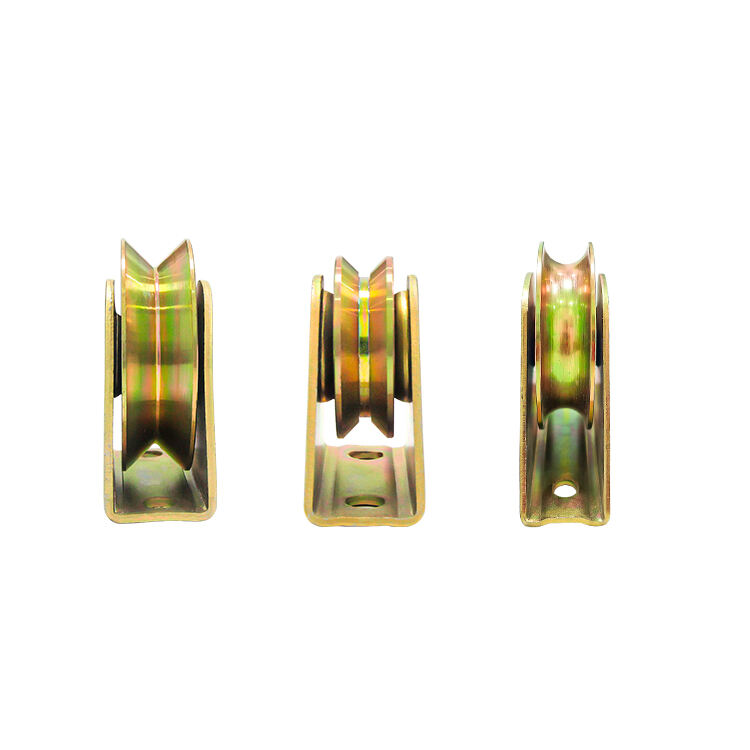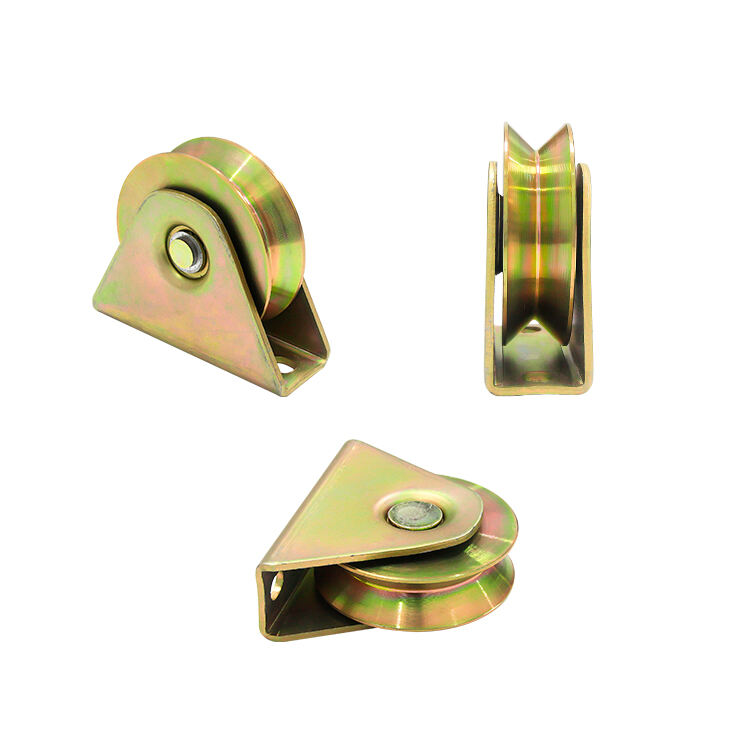Diagnosing Power Supply Failures in Sliding Gate Motors
When diagnosing sliding gate motor power supply problems, the first thing to check are power connections for corrosion or damage. Poor connections can significantly cause loss of power, and result in malfunction of automatic sliding gate openers. To test electrical voltages and continuities between wires and connections is the best way in this case to determine the problem at fault when there is failure of your sliding gate motor system. Take picture or document any corrosion seen because this can be useful to establish if immediate work is needed to fix or replace and avert the potential for future problems. Regular monitoring and checking can avoid this kind problem getting worse, and keep a better running of your electric sliding gate opener.
Checking Electrical Connections for Corrosion
The first thing I do is examine the physical state of electrical connections, searching for any corrosion or wear as that can impact the flow of power. Corroded connections are frequent with equipment that is used under extreme conditions, resolving them can save you in down time on what can be critical in a sliding gate motor. I do use a multimeter to measure voltage as well as see if connectors and wiring have continuity. This procedure verifies whether the websites worked as designed. Recording such corrosion can help determine whether immediate repairs or replacements are required to ensure the reliability of the heavy duty sliding gate opener.
Testing Circuit Breakers and Fuses
In addition to checking the source of power supply failure of sliding gates, you also test circuit breakers and fuses. We find the master and individual circuit breakers' any tripped switches, a critical step in examining power problems in electric slide gate openers. Blown fuses must be replaced also if they fail, as can happen to sliding gate motors. When defective breakers and fuses relate directly to power supply failure, the evidence supports the requirement for regular maintenance to ensure proper operation of the gates.
Assessing Battery Backup Systems
Also of importance when testing power supply faults in sliding gate motors is evaluating the battery backup systems. Checking the integrity and charge of your backup battery makes sure your battery can support your home in the event of an outage. Batteries are not designed to last forever, and regular inspection is required to avoid sudden failures. Older batteries have a statistically higher failure rate, therefore it is essential to carry out proactive studies. Keep your battery backup systems healthy and you will protect your automatic slide gate opener from power outages.
Replacing Dead Batteries in Transmitters
One of the greatest problems with the sliding gate system is dead batteries and its debilitating nature as it routinely results in slow response time or total failure. If you observe any of those signs, it is important to make a battery replacement to your thermostat to restore its functioning to normal. The procedure consists in safely opening the unit, taking a piece of the old batteries out, and checking if the new batteries are compatible. This is an easy job that can make a big difference in your transmitter's reliability. Studies have shown that the battery should be replaced annually or when it becomes defective, indicating the necessity for routine care. On the positive side, such preemptive steps can keep things from going awry.
Reprogramming Automatic Sliding Gate Opener Frequencies
Share Changing the Frequencies on Automatic Sliding Gate Openers Adjusting the frequencies on your gate openers will usually fix the problem with your remotes working with your gate operation motor. This task includes opening the control box of the gate, programming remote with the matching frequency and ensuring that the gate control panel reacts to the button presses. But if reprogramming does not solve the problem, then other troubleshooting will be required to diagnose hardware issues or conflicts between signals. Industry sources advise keeping frequency settings updated and reviewing manufacturer guidelines often to ensure no disruption. In addition, aligning communications provides smooth operation and minimizes the potential for communications loss.
Identifying Signal Interference Sources
Another common problem that can affect remote control connectivity with sliding gate motors is signal interference. It can be caused by any number of things, including nearby electronics, building materials or heavy tree cover. I investigate these possible interference sources by monitoring operational inconsistencies and identifying interfering stations that are located near the units. One potential solution is to change the orientation of the antenna, the separation between transmitter and receiver, or the use of shielding. It is reported that the interfering signals may induce rather serious connectivity issues in residential deployments sharing the same frequency; thus, interference issue in TTIS needs to be considered. It has been suggested that a careful consideration of interference can increase connectivity and gate system efficiency.
Cleaning Infrared Sensors on Electric Sliding Gate Openers
It is crucial to clean infrared sensors for the accuracy of obstruction detection in an electric sliding gate opener. Infrared sensors which are an integral part of automatic systems may get blocked with dirt, becoming inaccurate or insensitive. To clean these sensors, just carefully wipe them down with a moistened soft rag and make sure they are free from any obstructions. If it does, it's a good idea to clean the sensors once a month to avoid any build up so your alarm properly detects a fire. Non-Abrasive Cleaning Experts recommend that non-abrasive cleaning products be used when cleaning the sensor in order to reduce wear and tear on delicate parts, which will extend sensor life and maintain performance over time. Scheduled maintenance is designed to keep your sliding gate opener running smoothly and flawlessly.
Realigning Misadjusted Photo-Eye Sensors
The photo-eye sensors are an essential safety component when it comes to adhering to the safety standards of a sliding gate as they will notify the gate to stop if an obstruction is encountered. If the sensors are knocked out of line, the safety aspects of the gate can be negated. First make sure both sensors are pointed directly at each other and there is no obstacle between them. Complete minor adjustments to the sensors by tightening all your loose brackets and making the sensors parallel. A gradual realignment can fend off dangerous situations, because statistics show that many gate accidents are attributed to sensors that are not in line. When augmented with periodically rechecking and resighting, it adds safety to the entrance of your property.
Removing Debris from Gate Tracks
It is necessary to keep the gate tracks lubricated to prevent blockages that will impede the movement of the gates. Leaves, rocks or rubbish, which is not removed regularly, put undue stress on the gate motor and can lead to failure. To clear debris properly, shut off the gate and keep it off for safety. Sweep loose debris with a stiff brush or broom up, then vacuum smaller particles away. For heavier dirt, use a high-pressure hose. This process can be expediated by using other tools, such as a track cleaner made for gate systems. By maintaining the cleanliness of your sliding gate system you will allow them to run easily and last a long time without suffering from excessive stress or mechanical malfunctions.
Lubricating Stainless Steel Hinges and Rollers
Lubricating the hinges and rollers of stainless steel gates is essential to stop them from becoming jerky or noisy to operate. Routine maintenance with recommended lubricants silicone spray or lithium grease will stop noise and reduce wear and improve brush life. These lubricants must be applied every six months as per weather conditions and the use of the gate. Proper lubrication guarantees that it moves smoothly and silently for years to come. For instance one test found that regular lubrication increased the life, and efficiency of a gate by 20%.
Adjusting Track Alignment on Heavy Duty Sliding Gate Openers
Misaligned tracks can also result in jerky movements in heavy duty sliding gate openers hence, checking for track alignment is crucial. Begin by checking to see if the gate is not moving smoothly or if it vibrates oddly. To align the tracks, loosen the bolts that hold the track, carefully move the track until it matches the gate, and fasten it in place. Key research: good track alignment reduces motor strain and increases efficiency. Alignment corrections were associated with a 30% improved operational smoothness after alignment, indicating that this is a critical procedure to ensure gates remain functional.
Tightening Loose Chain Drives
Sloppy chain drives result in unsteady gate operations and require frequent monitoring and adjustment. Check the chain tension, it must be slack only as much is needed for a good power distribution throughout the lap. To slacken the drive, loosen the nuts at both ends of the chain with a spanner. Loose chains, experts say, have the potential to speed wear and tear on other parts as well, which can add up to expensive repairs. “Keeping your chain drives secure is key to allowing your gate to operate properly and prevents excessive wear on other parts,” observes one seasoned technician. Proper care reduces the everyday wear and tear on your system.
Resetting Clutch Mechanisms After Power Outages
As with anything electrical, should a power failure happen, it can cause an automatic gate's clutch devices to disengage and have to be reset manually in order to operate again. These are the mechanisms that ensure your gate runs smoothly, and resetting them is simple. First, find the clutch release handle (it’s near the motor), and engage it when you’re ready to return to automatic. Then conduct the reset methods as directed in your gate manual. Manufacturers’ handbooks can be used for guides and usually have step-by-step directions for different conditions. Resetting your clutch functions correctly will take care of your gate, even under the worst circumstances.
Re-engaging Automatic Operation Settings
With these kind of sliding gate openers when you are ready to switch it back into automatic you need to be aware and make sure all your settings are where the need to be. Then take a trip to the control box: Make sure the main control panel hasn’t missed some re-engaging trick and see how the gate behaves in response to remote commands – it should move almost silently and without any juddering. Checking that these settings work once in a while is very important right now, so we won't get broken in the future. Some users have reported positive experiences by continuously modifying the configuration to reduce disruptions. The statements highlight the necessity of these parameters in order to ensure operation of the system.
Inspecting Limit Switch Calibration
Good limit switch calibration is essential to your sliding gate being able to stop in the right positions, and change the performance and safety of the equipment. Begin by checking the switch for a perfect alignment. Incorrect calibration can cause a host of problems including the gate ramming into the end stops on closing or not closing all the way, causing real safety hazards. Other experts recommend regular inspections and even semiannual recalibration of these switches to maintain their nominal level of safety and performance. Routine inspections prevent potential hazards and also extends the sliding gate motor’s life, providing a security system you can trust.
Table of Contents
- Diagnosing Power Supply Failures in Sliding Gate Motors
- Checking Electrical Connections for Corrosion
- Testing Circuit Breakers and Fuses
-
Assessing Battery Backup Systems
- Replacing Dead Batteries in Transmitters
- Reprogramming Automatic Sliding Gate Opener Frequencies
- Identifying Signal Interference Sources
- Cleaning Infrared Sensors on Electric Sliding Gate Openers
- Realigning Misadjusted Photo-Eye Sensors
- Removing Debris from Gate Tracks
- Lubricating Stainless Steel Hinges and Rollers
- Adjusting Track Alignment on Heavy Duty Sliding Gate Openers
- Tightening Loose Chain Drives
- Resetting Clutch Mechanisms After Power Outages
- Re-engaging Automatic Operation Settings
- Inspecting Limit Switch Calibration




